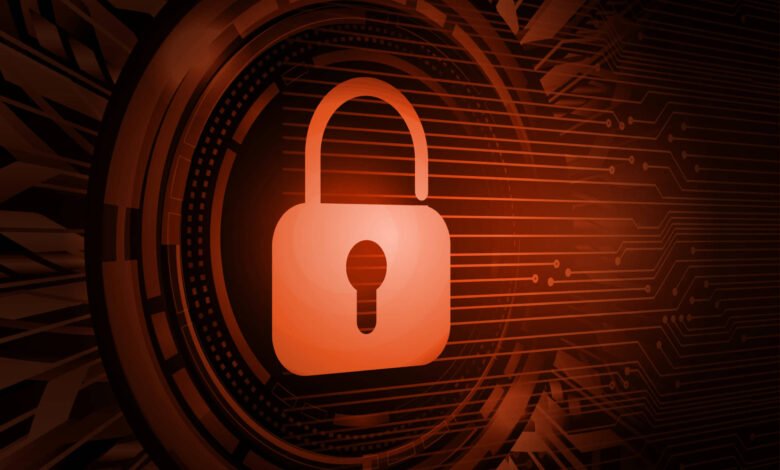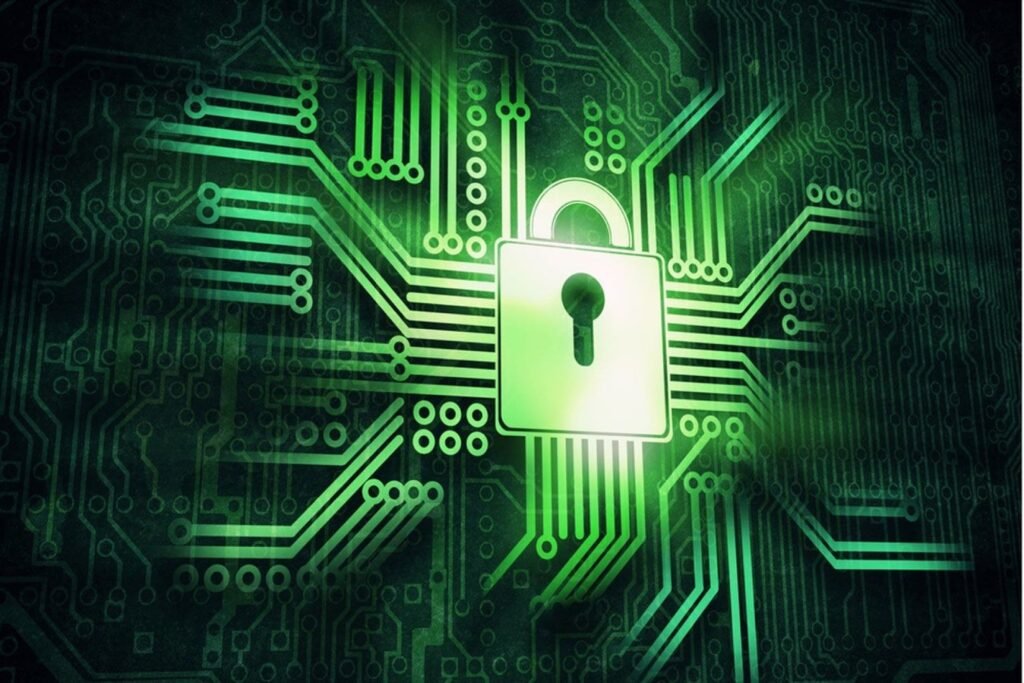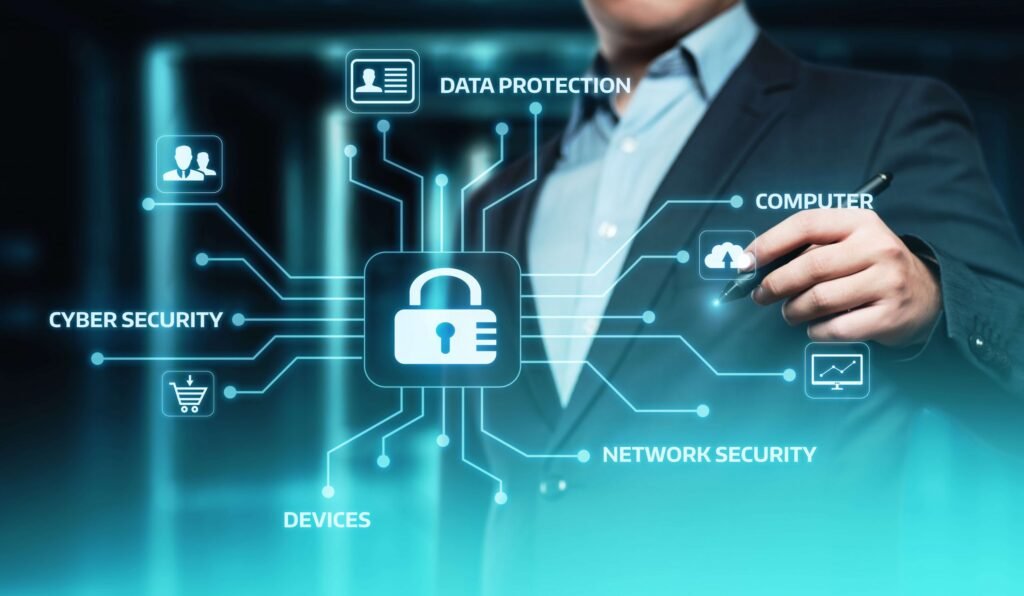How Cyber Security Protect Data: An In-Depth Look (2023)

How Cyber Security Protect Data: An In-Depth Look (2023). In today’s digital age, data is a precious commodity. It is essential to protect sensitive information from cyber criminals who are always looking for ways to breach security measures. Cyber security is an essential aspect of data protection that involves various measures and techniques that keep data safe from unauthorized access, theft, and cyber-attacks. In this article, we will discuss how cyber security protects data.
Types of Ransomware d. Social Engineering i. What is Social Engineering? ii. How does Social Engineering Threaten Data Security? iii. Types of Social Engineering 6. Cyber security Best Practices for Protecting Data a. Regularly update your software and security patches b. Use strong passwords and two-factor authentication c. Use a Virtual Private Network (VPN) d. Back up your data regularly e. Monitor your accounts for suspicious activity
Cyber security Measures to Protect Data:
Cyber security measures are crucial to protect sensitive data from unauthorized access, theft, or damage. As technology advances and more information is stored online, the risk of cyber attacks increases. Cyber criminals use various techniques such as phishing, malware, and ransomware to gain access to confidential data.

To prevent such attacks, cyber security measures are put in place to safeguard networks, systems, and devices. These measures include firewalls, antivirus software, multi-factor authentication, and regular data backups. It is important for individuals and organizations to be vigilant and proactive in implementing cyber security measures to ensure the protection of their data.
Firewall Protection:
A firewall is a network security system that monitors and controls the incoming and outgoing network traffic based on predetermined security rules. Firewalls act as a barrier between a trusted internal network and an untrusted external network such as the internet. Firewalls can be hardware-based or software-based and can be configured to block or allow specific types of traffic.
Read more: How to use AI for making NFTs in 2023
Antivirus Software:
Antivirus software is designed to prevent, detect, and remove malware from a computer system. Malware is a general term used to describe a variety of malicious software, including viruses, worms, Trojans, spyware, and adware. Antivirus software works by scanning files and programs for known malware signatures and blocking them from running or removing them from the system.
Intrusion Detection System (IDS):
An Intrusion Detection System is a security software or hardware appliance that monitors network traffic for signs of unauthorized access, attacks, or other malicious activity. IDS systems can be configured to alert security teams when suspicious activity is detected, allowing them to take action to prevent data loss or other security breaches.
Encryption:
Data encryption is the process of converting plaintext data into an unreadable format using cryptographic algorithms. Encrypted data can only be decrypted with a decryption key, making it difficult for attackers to steal or manipulate sensitive information.
Access Control:
Access control is a security mechanism that regulates who can access specific resources within a system. Access control policies can be implemented at the user, application, or system level and can help prevent unauthorized access to sensitive data.
Password Protection:
Password protection is a security mechanism that requires users to enter a password to access a system or application. Passwords should be complex and unique to prevent unauthorized access by hackers or cyber criminals.
Cyber security Best Practices for Protecting Data:
Cyber security best practices are essential for protecting data from various cyber threats. With the increasing use of technology, data breaches have become a common occurrence, and the impact of such incidents can be severe. Cyber criminals use various techniques to steal or compromise data, including phishing, malware, ransomware, and social engineering.

To safeguard data, individuals and organizations need to follow best practices for cyber security. These practices include implementing strong passwords, using multi-factor authentication, keeping software up to date, regularly backing up data, and providing security awareness training to employees. By following these best practices, individuals and organizations can mitigate the risks of cyber attacks and ensure the safety and security of their sensitive data.
Regularly update your software and security patches:
Software updates and security patches are essential for keeping your system and applications up to date with the latest security features and patches. Regular updates can help prevent security vulnerabilities that could be exploited by cyber criminals.
Use strong passwords and two-factor authentication:
Strong passwords are essential for protecting sensitive data. Two-factor authentication adds an extra layer of security by requiring users to enter a second form of authentication, such as a code sent to their phone, in addition to their password.
Use a Virtual Private Network (VPN):
A VPN can help protect your data by encrypting your internet traffic and routing it through a private network. VPNs can help prevent cyber criminals from intercepting your data or tracking your online activities.
Back up your data regularly:
Backing up your data regularly can help prevent data loss in the event of a cyber-attack or system failure. Regular backups can help ensure that you have a copy of your important data in case of an emergency.
Monitor your accounts for suspicious activity:
Regularly monitoring your accounts for suspicious activity can help you detect and
FAQs:
What is data encryption, and how does it protect data?
Data encryption is the process of converting plaintext data into an unreadable format using cryptographic algorithms. Encrypted data can only be decrypted with a decryption key, making it difficult for attackers to steal or manipulate sensitive information. Encryption can help protect data from unauthorized access and ensure its confidentiality.
What are the most common types of cyber threats?
The most common types of cyber threats include malware, phishing attacks, ransomware, social engineering, and denial of service attacks. These threats can be carried out by cybercriminals seeking to steal sensitive information, compromise systems, or disrupt business operations.
What should I do if I suspect a data breach?
If you suspect a data breach, you should take immediate action to contain the damage and prevent further loss or compromise of sensitive information. This can include disconnecting affected systems from the network, notifying relevant parties such as IT security personnel or law enforcement, and implementing incident response protocols to investigate and address the breach.
Read more: What is blockchain and how does it work?
Conclusion:
In conclusion, data security is a critical concern for individuals and organizations alike. Cyber security measures such as firewalls, antivirus software, intrusion detection systems, encryption, access control, and password protection can help protect sensitive data from cyber threats such as malware, phishing attacks, ransomware, social engineering, and denial of service attacks. Implementing cyber security best practices such as regular updates, strong passwords, two-factor authentication, VPNs, data backups, and monitoring for suspicious activity can further enhance data security and help prevent potential breaches. By staying vigilant and taking proactive measures to protect their data, individuals, and organizations can better safeguard their information and minimize the risks of cyber attacks.







